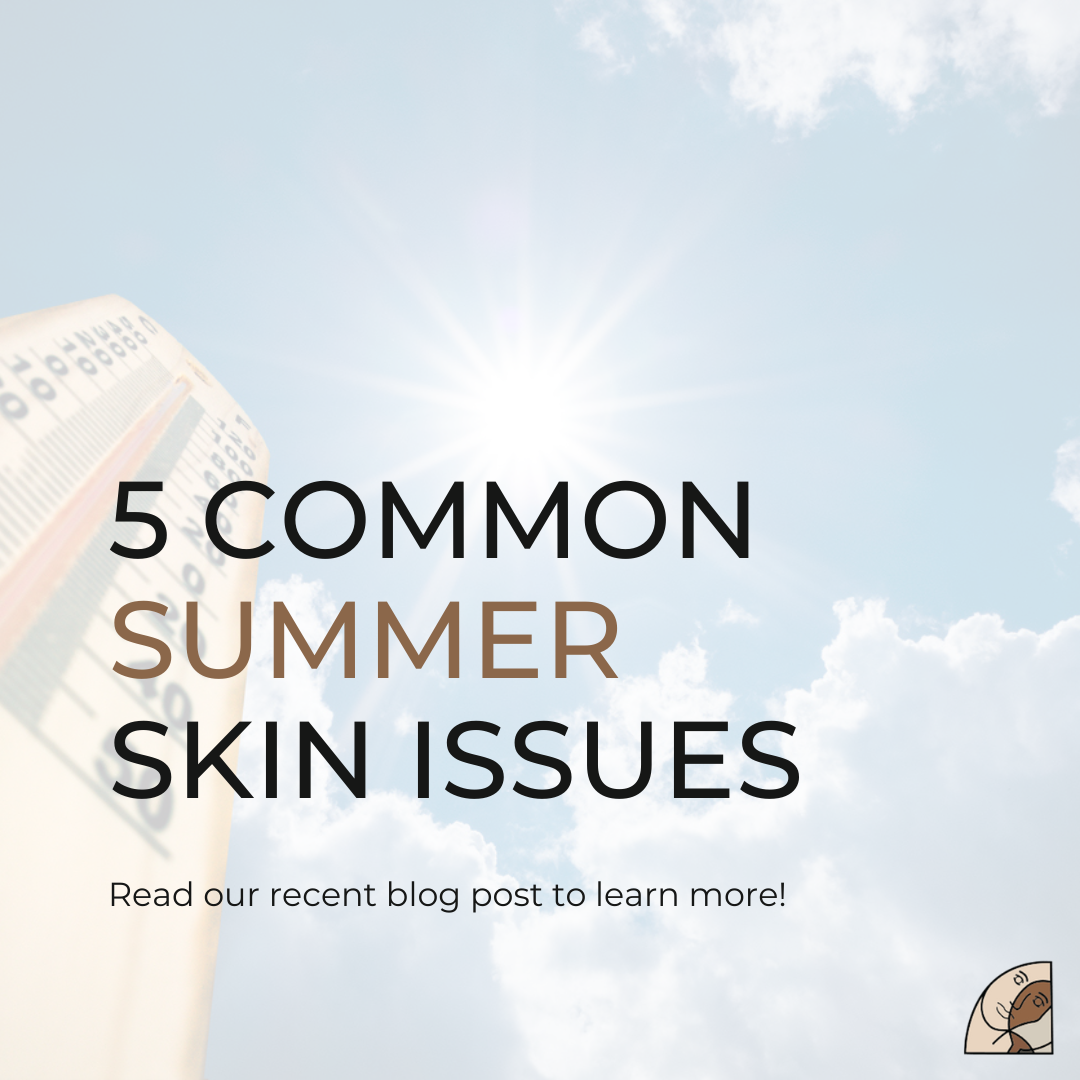After a long winter cooped up, the arrival of sunny days can make you eager to be outside. Getting outdoors can be good for you in many ways. It provides opportunities for exercise and can boost your mental health. But as the heat and humidity rise here in Chicagoland, some health risks also increase. This list includes 5 of the most common skin issues that pop up in the summer, as intense heat and humidity put a strain on your skin.
Sunburn
A sunburn is reddening of the skin that occurs after you are overexposed to the sun or other ultraviolet light.The first signs of a sunburn may not appear for a few hours. The full effects may not appear on your skin for 24 hours or longer. Possible symptoms include:
- Red, tender skin that is warm to the touch
- Blisters that develop hours to days later
- Severe reactions (sometimes called sun poisoning), including fever, chills, nausea, or rash
- Skin peeling on sunburned areas several days after the sunburn
Symptoms of sunburn are usually temporary. However, damage to skin cells is often permanent, andcan have serious long-term effects including skin cancer and early aging of the skin. By the time the skin starts to become painful and red, the damage has been done. Pain is worst between 6 to 48 hours after sun exposure. Here are our tips on staying safe in the sun during the hot and humid summer months of Chicagoland.
Acne
Acne is a common skin disease that causes pimples. Pimples form when hair follicles under your skin clog up. Most pimples form on the face, neck, back, chest, and shoulders. Anyone can get acne, but it is common in teenagers and young adults. Unfortunately, overexposure to the sun, heat, and humidity can cause acne flare ups as well.
If your skin flares up with acne:
- Clean your skin gently
- Try not to touch your skin
- Avoid the sun
Acne can be treated with over-the-counter (OTC) and prescription medicines. Your SkinMD provider will determine which is best for you. For more information on acne, keep reading here.
Dry Irritated Skin
Dry skin occurs when your skin loses too much water and oil. Dry skin is common and can affect anyone at any age, and this is especially true when summer weather sets in. Symptoms of dry skin include:
- Scaling, flaking, or peeling skin
- Skin that feels rough
- Skin tightness, especially after bathing
- Itching
- Cracks in the skin that may bleed
You can get dry skin anywhere on your body, but it is commonly found on the hands, feet, arms, and lower legs. You can ease dry skin by restoring moisture to your skin through moisturizing creams and drinking plenty of water.
Heat Rash
Heat rash is a skin irritation that stings and makes your skin red. It is also called miliaria or prickly heat. If you have heat rash, your skin may feel itchy. Small bumps may form, and you may feel some “prickly,” tingling pain.
Heat rash occurs most often in hot, humid weather. Sound familiar, Chicago? Anyone can get heat rash, but it is most common in infants and young children. Adults, however, can also be affected by heat rash. Heat rash usually looks like a cluster of pimples or small blisters. It is most likely to appear in places where skin touches skin, including:
- Neck
- Groin
- Underneath the breasts
- In the creases of the elbows
- Armpits
In many cases, heat rash can be avoided. In hot weather, dress yourself or your child in lightweight cotton clothing. Cotton helps absorb moisture to keep it off of your skin. If the weather is hot, turn on the air conditioner, or use a fan to help you stay cool and dry.
Poison Ivy, Oak, and Sumac
You can encounter poison ivy growing almost anywhere in Illinois. Most people are sensitive to the plants’ oily sap. The sap is in the root, stems, leaves and fruit of these plants. If it gets on your skin, it causes a blistering skin rash. The rash can range from mild to severe, depending on how much sap gets on your skin and how sensitive you are to it. Problems can also occur if the plants are burned. Airborne sap-coated soot can get into the eyes, nose, throat and respiratory system.
The best way to avoid the rash is to learn what the plants look like and stay away from them. If you come into contact with the plants, wash your skin and clothing right away. If you develop a rash, ask your SkinMD provider about over-the-counter medicines. For severe rashes, schedule an appointment with a SkinMD provider.



